10 Types of Companion Plants for Cauliflower (With Pictures)
-
Codee Chessher
- Last updated:
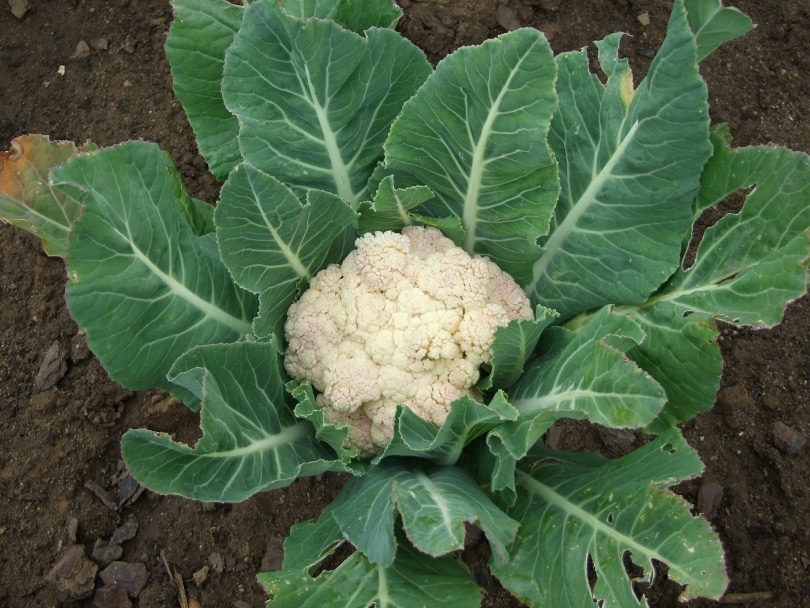
Cauliflower gets a bad rap, as it’s hard to grow, but it’s delicious and packed with nutrients. Growing your own cauliflower can be very hard as a beginner, but companion planting can be just the thing to repel pests and attract pollinators to your cauliflower.
Let’s check out some of the best companion plants for cauliflower below in more detail.
The 10 Types of Companion Plants for Cauliflower
1. Dill
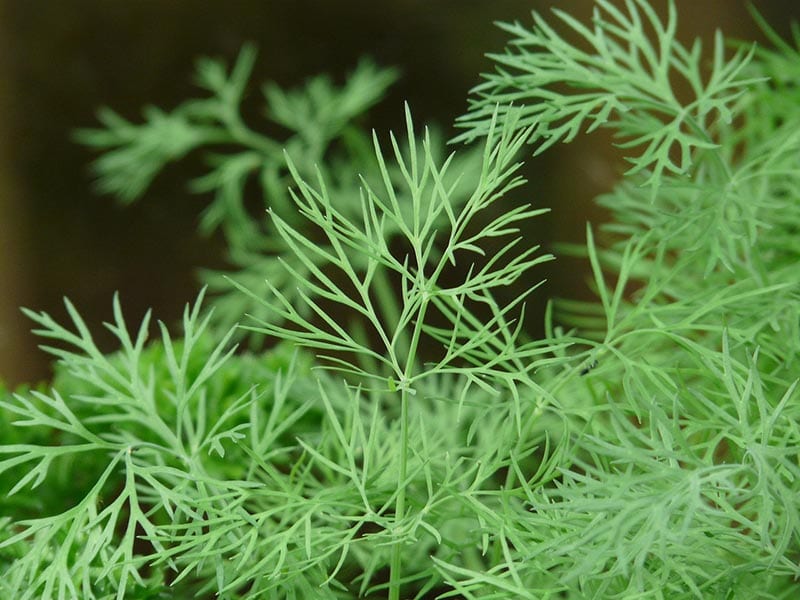
| Benefits: | attracts beneficial wildlife, repels cabbage moths |
Dill is one of the top companions for cauliflower, but most people harvest it before the plant blooms. Each flower head becomes an explosion of yellow clustered flowers, and the plant will attract tons of pollinators like butterflies and bees. Not only that, but it will attract beneficial predators like lacewings and wasps, which prey on cauliflower pests like aphids and cabbage moths.
2. Garlic
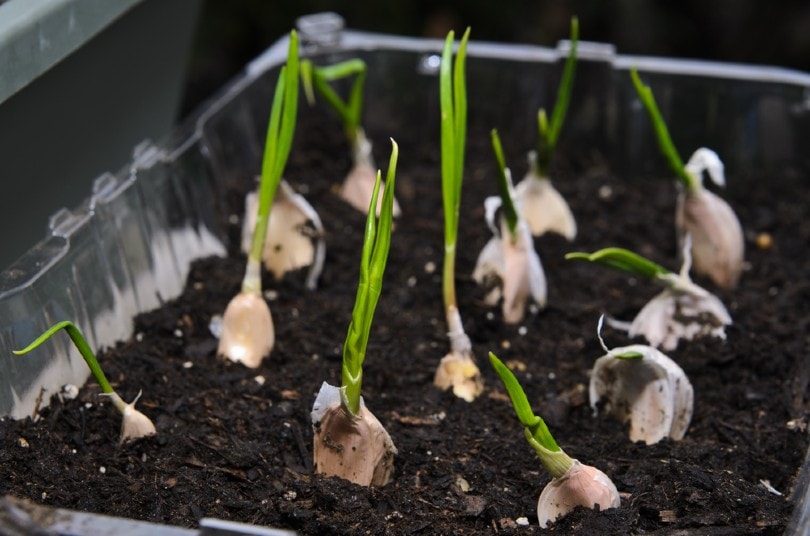
| Benefits: | repels pests and fungi |
Garlic is a natural ally for cauliflower, with a scent that humans love and animals despise. The pungent aroma of garlic prevents pests from smelling your equally delicious cauliflower, and they’ll leave in search of other food.
Garlic also contains a sulfuric antifungal compound, which strengthens the antifungal resistance of nearby plants. Garlic is fairly easy to grow, and there are numerous varieties widely available.
3. Mint
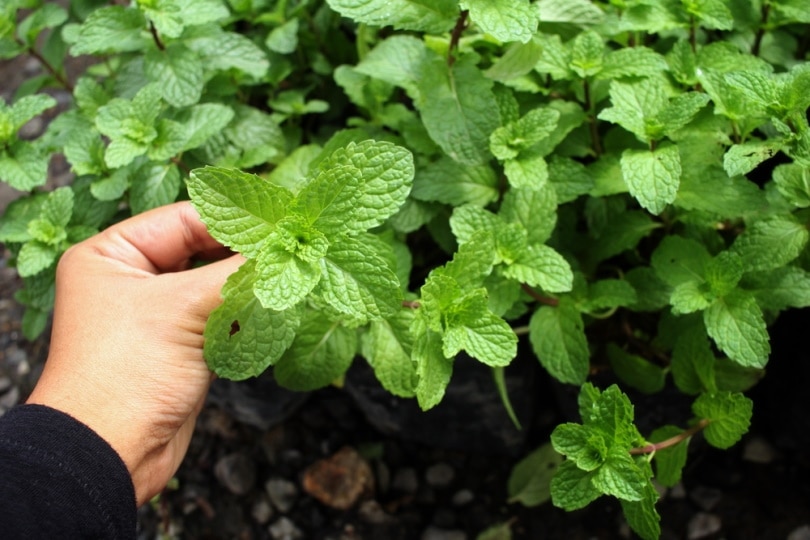
| Benefits: | repels pests |
Mint is well-known as an aromatic herb, but its secret superpower is repelling some of the cauliflower’s most vicious pests, like the dreaded cabbage moth. However, it will also attract beneficial pollinators if you let it flower.
Beware that mint is considered an invasive plant and will quickly overtake other plants in the nearby area. We suggest keeping mint in small pots as deterrents around the vegetable garden and especially near your cauliflower.
4. Hyssop
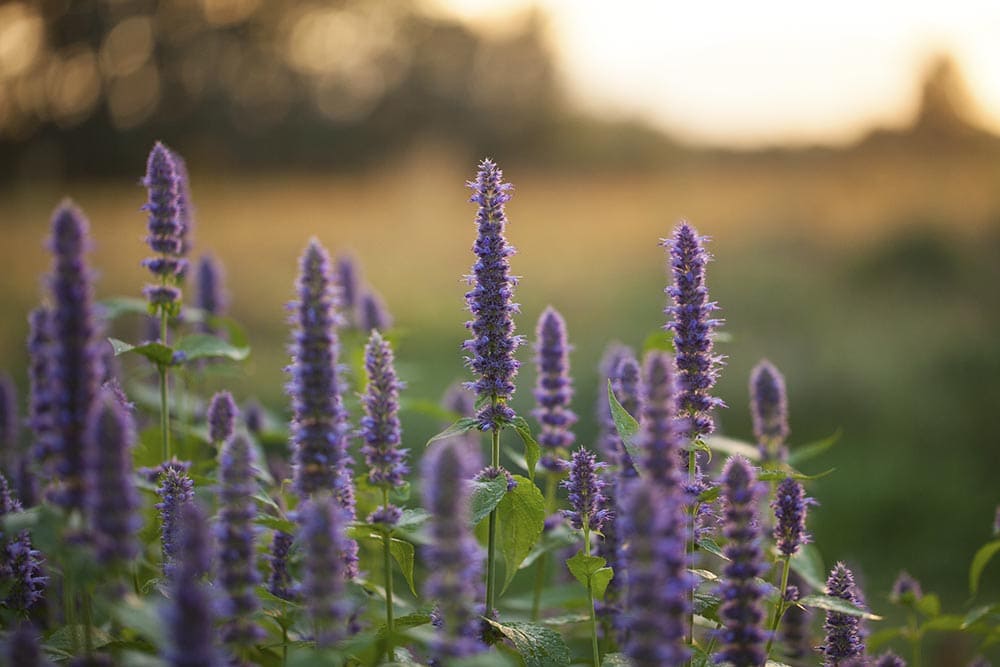
| Benefits: | attracts pollinators and acts as a trap crop |
Both true hyssop and anise hyssop will attract pollinators to your vegetable patch with tall purple flowers, but only true hyssop will double as a trap crop. It lures common garden pests away from your precious cauliflower, like cabbage moths, flea beetles, and slugs. Hyssop is most commonly grown as a perennial in flower pots.
5. Onion
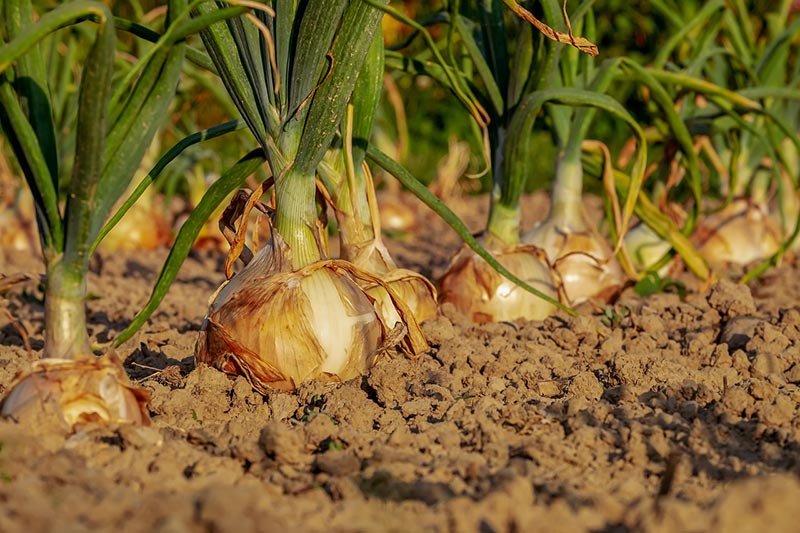
| Benefits: | repels pests and improves flavor |
The vertically growing onion is a great friend for your cauliflower because it won’t compete for space, but that’s not the only reason. Like its relative garlic, onion also has a distinctly pungent odor that garden pests hate.
A common garden myth says that cauliflower grown near onions tastes better, but nobody knows if it’s true or not. Onion requires fewer nutrients than greedy cauliflower too, so that makes it a natural companion plant.
6. Marigold
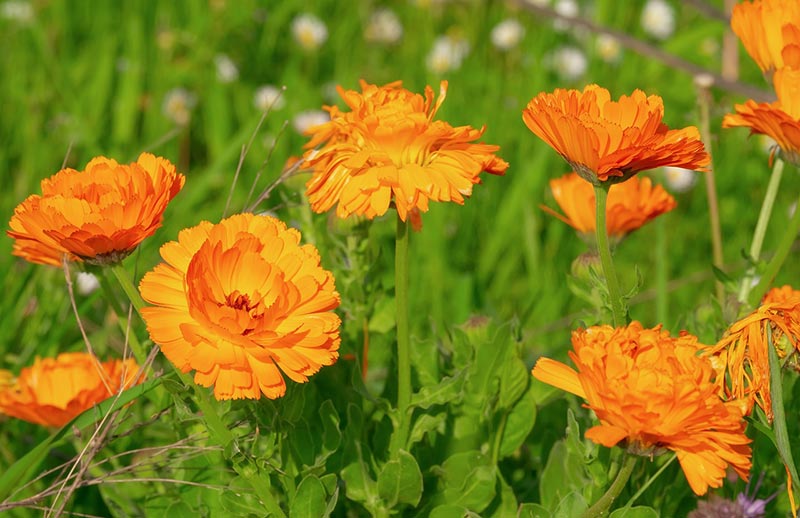
| Benefits: | acts as a trap crop, repels mammals, and attracts pollinators |
Marigold has a very strong smell that garden pests love. Destructive nematodes, aphids, and caterpillars alike will ignore your cauliflower and flock to your marigold patch. Pollinators like bees love marigolds too, which is always a great bonus.
Lastly, the spicy, pungent odor of marigolds is hated by rabbits, voles, and most mammals that might lurk nearby. Plant some around the edges of your vegetable garden to deter them in the future.
7. Nasturtium
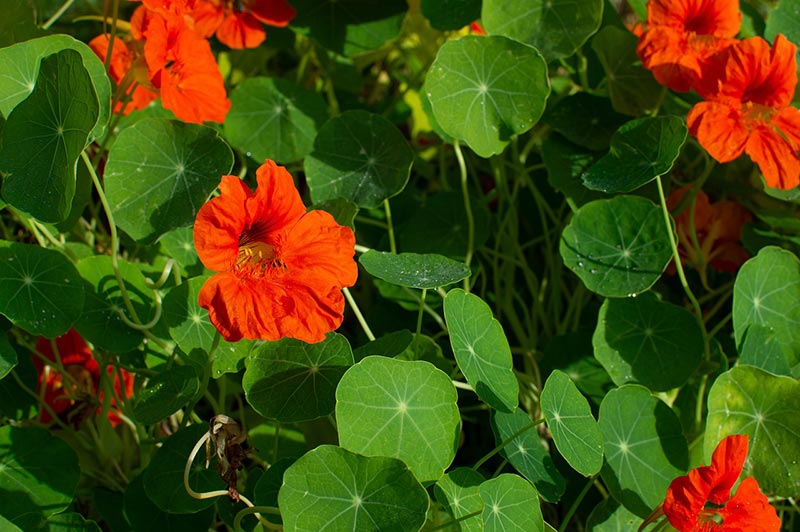
| Benefits: | attracts pollinators, shades out weeds, acts as a trap crop |
Also known as a tasty summer garnish, nasturtium can be grown for its numerous garden-related benefits too. It grows vertically shades out weeds in the garden and doesn’t compete with space-hogging cauliflower plants.
The bright yellow blossoms attract pollinators and troublesome pests alike, making it a triple threat. Nasturtium is very easy to grow and doesn’t need a lot of water, unlike cauliflower.
8. Potato
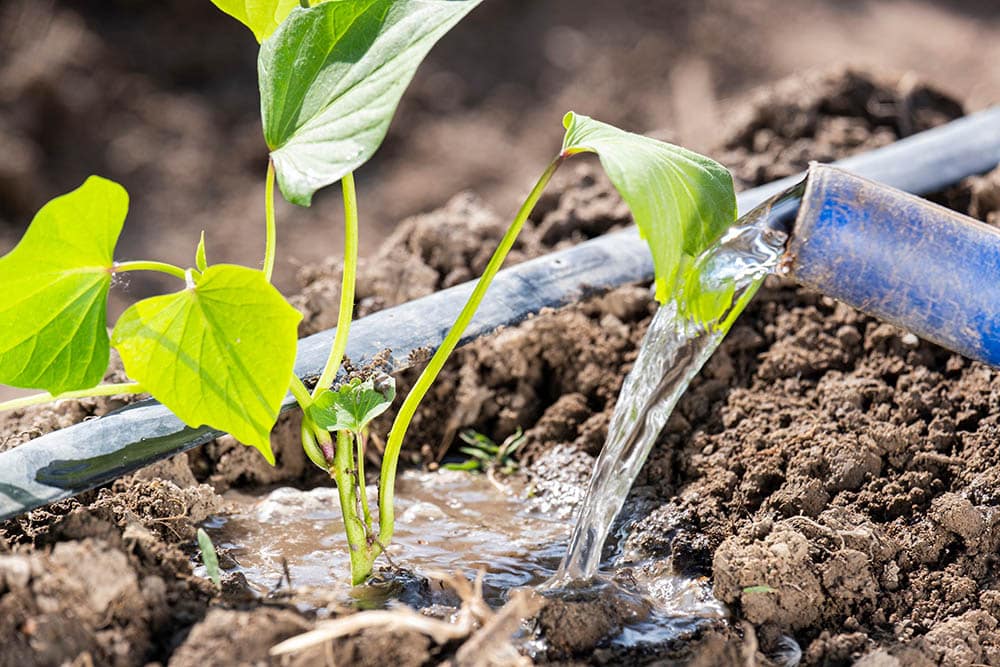
| Benefits: | trap crop |
Potatoes have much deeper roots for cauliflowers and don’t compete with cauliflower for nutrients, but that’s not their only use. Potatoes are a favorite of aphids and flea beetles that usually plague cauliflower, so alternate rows of potatoes with rows of cauliflower to repel the buggers from the area.
9. Sage
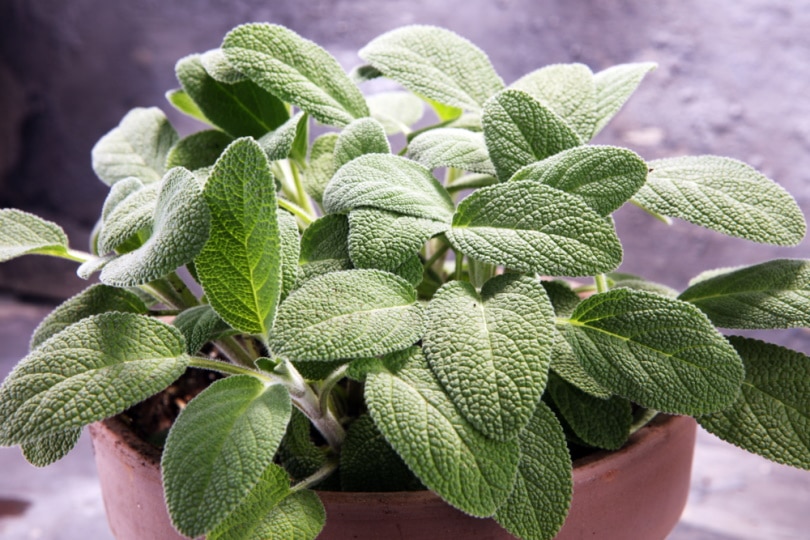
| Benefits: | deters pests and attracts pollinators |
Known for its lovely, earthy aroma, sage can be harvested before blooming as an herb. If you allow sage to flower, it produces gorgeous blue flowers that attract pollinators like wasps and bees. Specifically, parasitic wasps that prey on aphids and caterpillars that might feast on your cauliflowers. Finally, sage is a great herb to have on hand in the kitchen.
10. Thyme
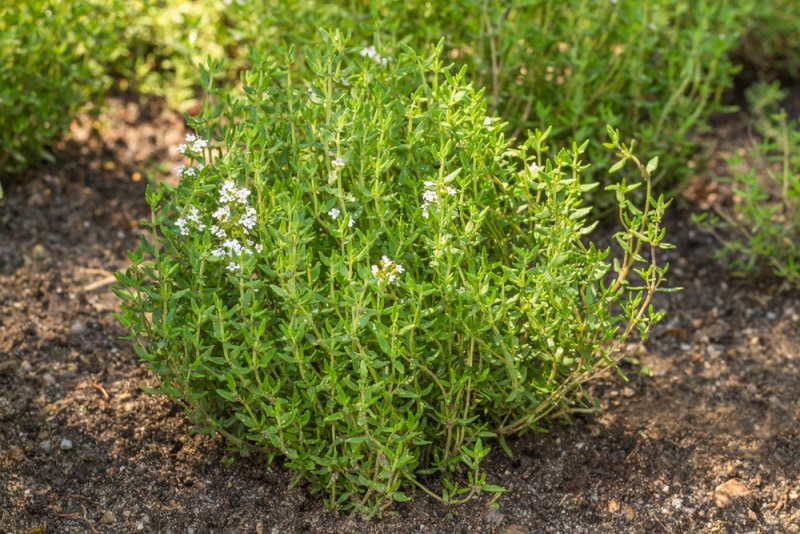
| Benefits: | repels pests and attracts beneficial wildlife |
Thyme is another aromatic herb beloved in the kitchen, but if allowed to blossom outside it will produce spiky pale flowers that beneficial predators love. Bees, parasitic wasps, and hoverflies that prey on aphids, caterpillars, and other problematic pests will flock to your thyme and protect your cauliflower in the process.
What Is Companion Planting and Why Should You Bother?
Companion planting is a phenomenon where neighboring plants confer some kind of benefit to each other. Native Americans, for example, have been growing the Three Sisters crop for centuries. This three-way crop consists of corn, beans, and squash. The three crops complement each other by providing nutrients and other benefits. For example, corn can act as a trellis for climbing beans.
Benefits don’t necessarily have to be dietary. Some crops have scents that deter bugs and mammal pests, like catnip. Sunflowers and other vegetables with strong stalks can act as supports for climbing plants, and other plants loosen compacted soil. Another possible use is to act as a trap crop, which means it attracts the same pests as your main crop.
Worst Companion Plants for Cauliflower
Cauliflower benefits from insect-repelling plants but suffers when you plant its own Brassica kin nearby. Heavy-feeding plants that need lots of nutrients and sun are also poor companions near cauliflower. Let’s check out a few below so you know what to avoid.
What to Not Plant Near Cauliflower:
- Brassica: Broccoli, cabbage, and Brussels sprouts all share pests, and planting them together can make pest infestations more likely to spread
- Strawberries: Strawberries are a direct competitor of cauliflower, occupying the same level of soil and requiring tons of nutrients
- Tomatoes: Tomatoes are another heavy-feeding competitor of cauliflower, and cauliflower is rumored to stunt the growth of nearby tomato plants
Conclusion
Cauliflower isn’t most people’s favorite food, but it can be delicious if cooked the right way. Growing healthy cauliflower is the first step, though, and companion plants can be a huge help along the way. Try planting some of the plants and herbs above to repel pests and attract pollinators to the garden today!
Featured Image Credit: Carlos López, Pixabay
Contents
